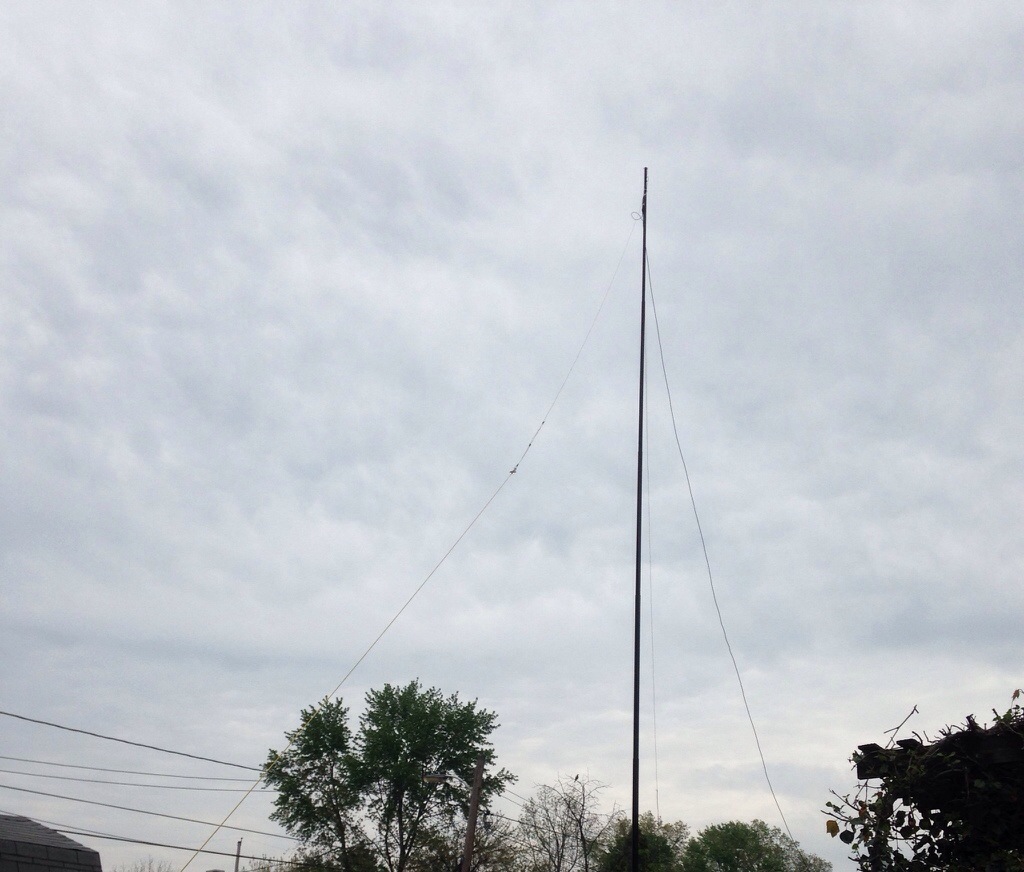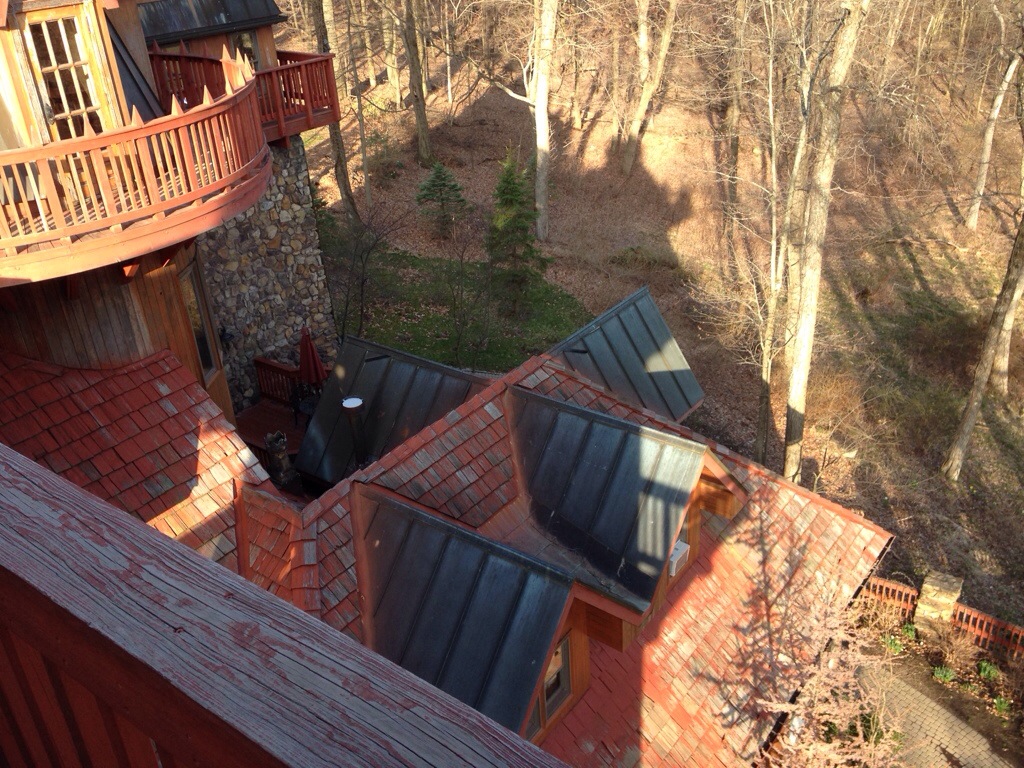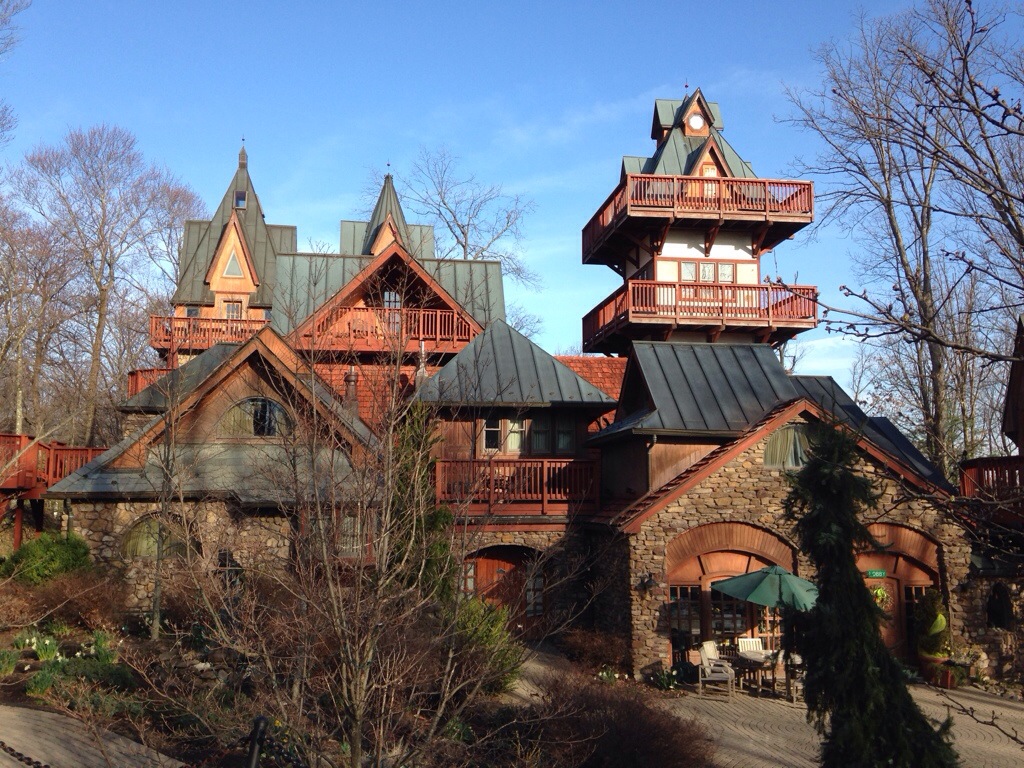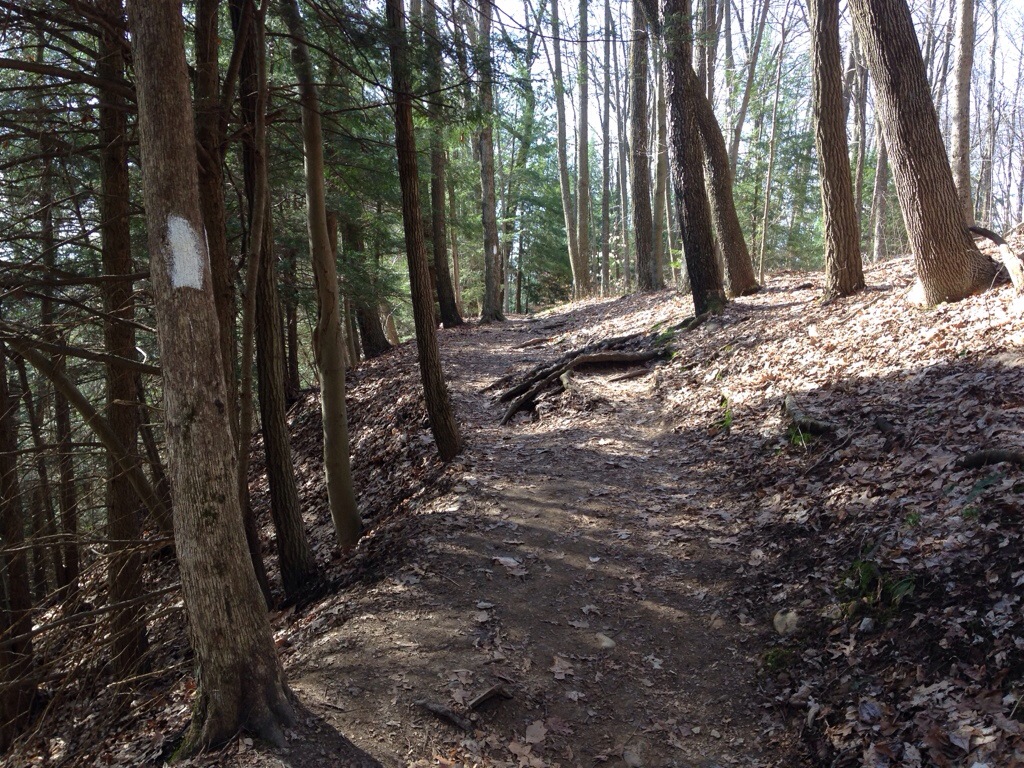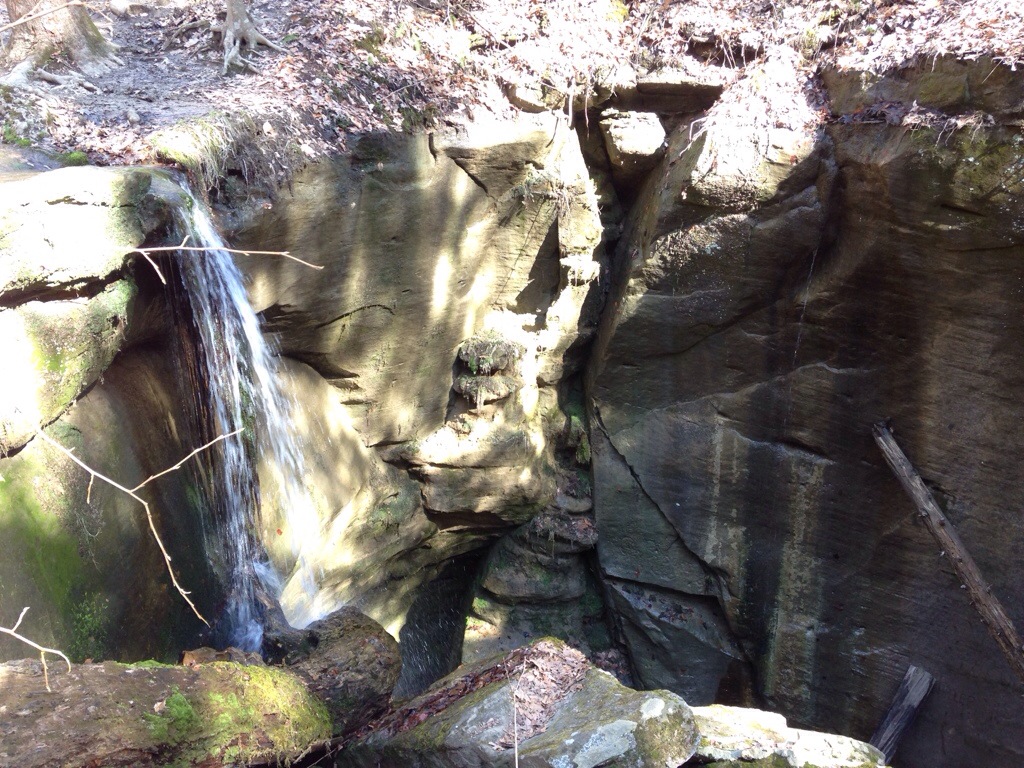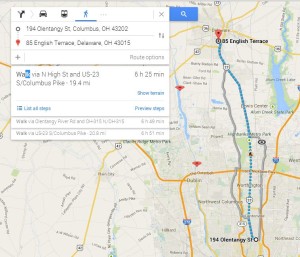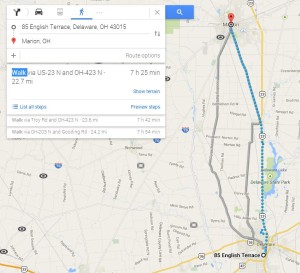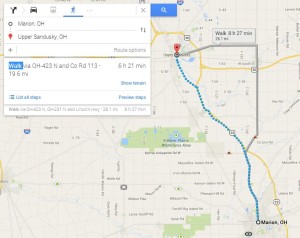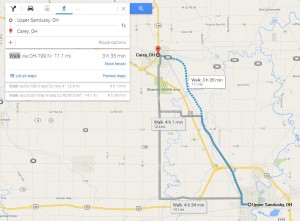By Finlo RohrerBBC News Magazine
A number of recent books have lauded the connection between walking – just for its own sake – and thinking. But are people losing their love of the purposeless walk?
Walking is a luxury in the West. Very few people, particularly in cities, are obliged to do much of it at all. Cars, bicycles, buses, trams, and trains all beckon.
Instead, walking for any distance is usually a planned leisure activity. Or a health aid. Something to help people lose weight. Or keep their fitness. But there’s something else people get from choosing to walk. A place to think.
Wordsworth was a walker. His work is inextricably bound up with tramping in the Lake District. Drinking in the stark beauty. Getting lost in his thoughts.
Charles Dickens was a walker. He could easily rack up 20 miles, often at night. You can almost smell London’s atmosphere in his prose. Virginia Woolf walked for inspiration. She walked out from her home at Rodmell in the South Downs. She wandered through London’s parks.
Henry David Thoreau, who was both author and naturalist, walked and walked and walked. But even he couldn’t match the feat of someone like Constantin Brancusi, the sculptor who walked much of the way between his home village in Romania and Paris. Or indeed Patrick Leigh Fermor, whose walk from the Hook of Holland to Istanbul at the age of 18 inspired several volumes of travel writing. George Orwell, Thomas De Quincey, Nassim Nicholas Taleb, Friedrich Nietzsche, Bruce Chatwin, WG Sebald and Vladimir Nabokov are just some of the others who have written about it.
From recent decades, the environmentalist and writer John Francis has been one of the truly epic walkers. Francis was inspired by witnessing an oil tanker accident in San Francisco Bay to eschew motor vehicles for 22 years. Instead he walked. And thought. He was aided by a parallel pledge not to speak which lasted 17 years.
But you don’t have to be an author to see the value of walking. A particular kind of walking. Not the distance between porch and corner shop. But a more aimless pursuit.
In the UK, May is National Walking Month. And a new book, A Philosophy of Walking by Prof Frederic Gros, is currently the object of much discussion. Only last week, a study from Stanford University showed that even walking on a treadmill improved creative thinking.
Across the West, people are still choosing to walk. Nearly every journey in the UK involves a little walking, and nearly a quarter of all journeys are made entirely on foot, according to one survey. But the same study found that a mere 17% of trips were “just to walk”. And that included dog-walking.
It is that “just to walk” category that is so beloved of creative thinkers.
“There is something about the pace of walking and the pace of thinking that goes together. Walking requires a certain amount of attention but it leaves great parts of the time open to thinking. I do believe once you get the blood flowing through the brain it does start working more creatively,” says Geoff Nicholson, author of The Lost Art of Walking.
“Your senses are sharpened. As a writer, I also use it as a form of problem solving. I’m far more likely to find a solution by going for a walk than sitting at my desk and ‘thinking’.”
Nicholson lives in Los Angeles, a city that is notoriously car-focused. There are other cities around the world that can be positively baffling to the evening stroller. Take Kuala Lumpur, the Malaysian capital. Anyone planning to walk even between two close points should prepare to be patient. Pavements mysteriously end. Busy roads need to be traversed without the aid of crossings. The act of choosing to walk can provoke bafflement from the residents.
“A lot of places, if you walk you feel you are doing something self-consciously. Walking becomes a radical act,” says Merlin Coverley, author of The Art of Wandering: The Writer as Walker.
But even in car-focused cities there are fruits for those who choose to ramble. “I do most of my walking in the city – in LA where things are spread out,” says Nicholson. “There is a lot to look at. It’s urban exploration. I’m always looking at strange alleyways and little corners.”
Nicholson, a novelist, calls this “observational” walking. But his other category of walking is left completely blank. It is waiting to be filled with random inspiration.
Not everybody is prepared to wait. There are many people who regard walking from place to place as “dead time” that they resent losing, in a busy schedule where work and commuting takes them away from home, family and other pleasures. It is viewed as “an empty space that needs to be filled up”, says Rebecca Solnit, author of Wanderlust: A History of Walking.
Many now walk and text at the same time. There’s been an increase in injuries to pedestrians in the US attributed to this. One study suggested texting even changed the manner in which people walked.
It’s not just texting. This is the era of the “smartphone map zombie” – people who only take occasional glances away from an electronic routefinder to avoid stepping in anything or being hit by a car.
“You see people who don’t get from point A to point B without looking at their phones,” says Solnit. “People used to get to know the lay of the land.”
People should go out and walk free of distractions, says Nicholson. “I do think there is something about walking mindfully. To actually be there and be in the moment and concentrate on what you are doing.”
And this means no music, no podcasts, no audiobooks. It might also mean going out alone.
CS Lewis thought that even talking could spoil the walk. “The only friend to walk with is one who so exactly shares your taste for each mood of the countryside that a glance, a halt, or at most a nudge, is enough to assure us that the pleasure is shared.”
The way people in the West have started to look down on walking is detectable in the language. “When people say something is pedestrian they mean flat, limited in scope,” says Solnit.
Boil down the books on walking and you’re left with some key tips:
- Walk further and with no fixed route
- Stop texting and mapping
- Don’t soundtrack your walks
- Go alone
- Find walkable places
- Walk mindfully
Then you may get the rewards. “Being out on your own, being free and anonymous, you discover the people around you,” says Solnit.

